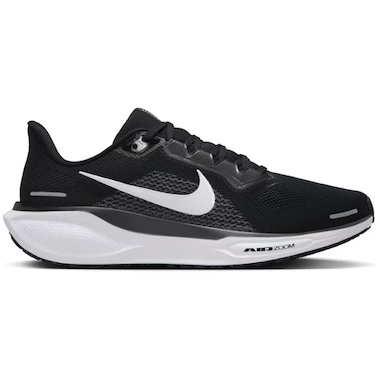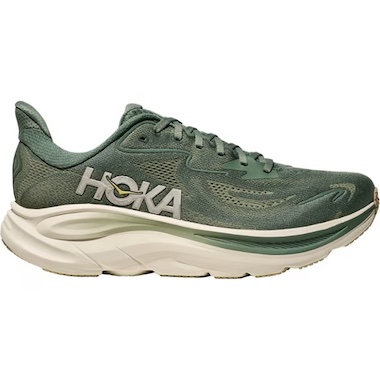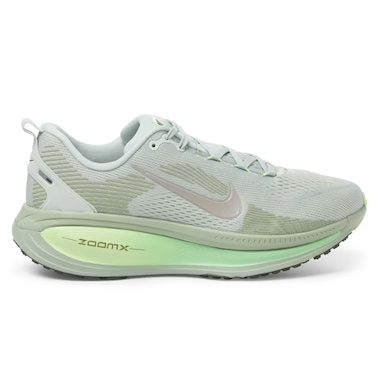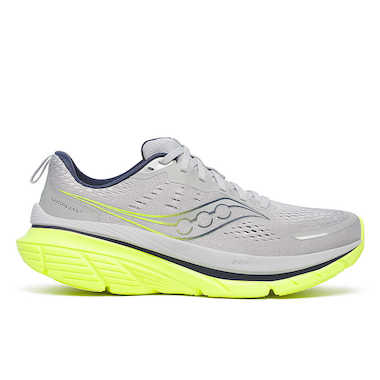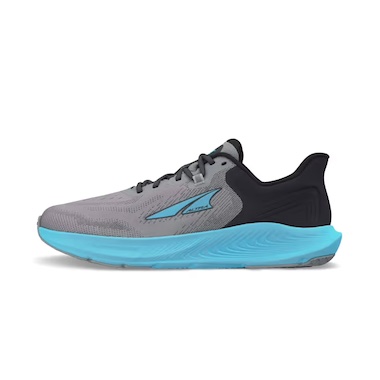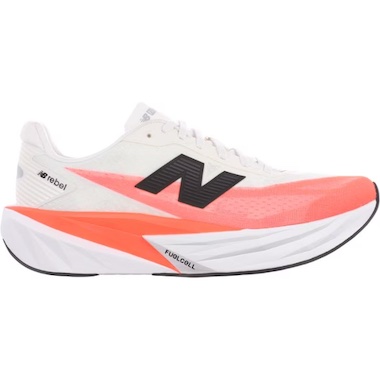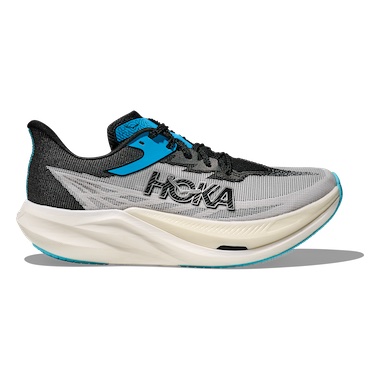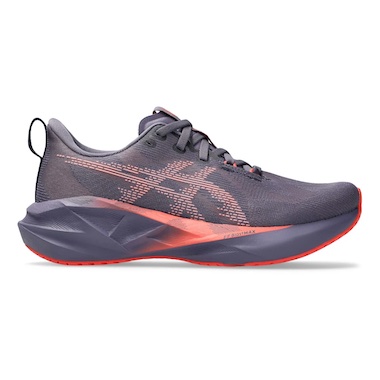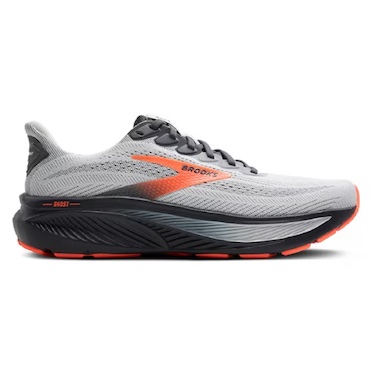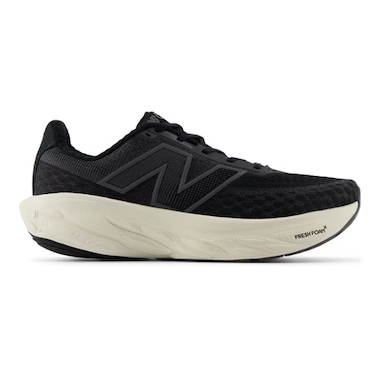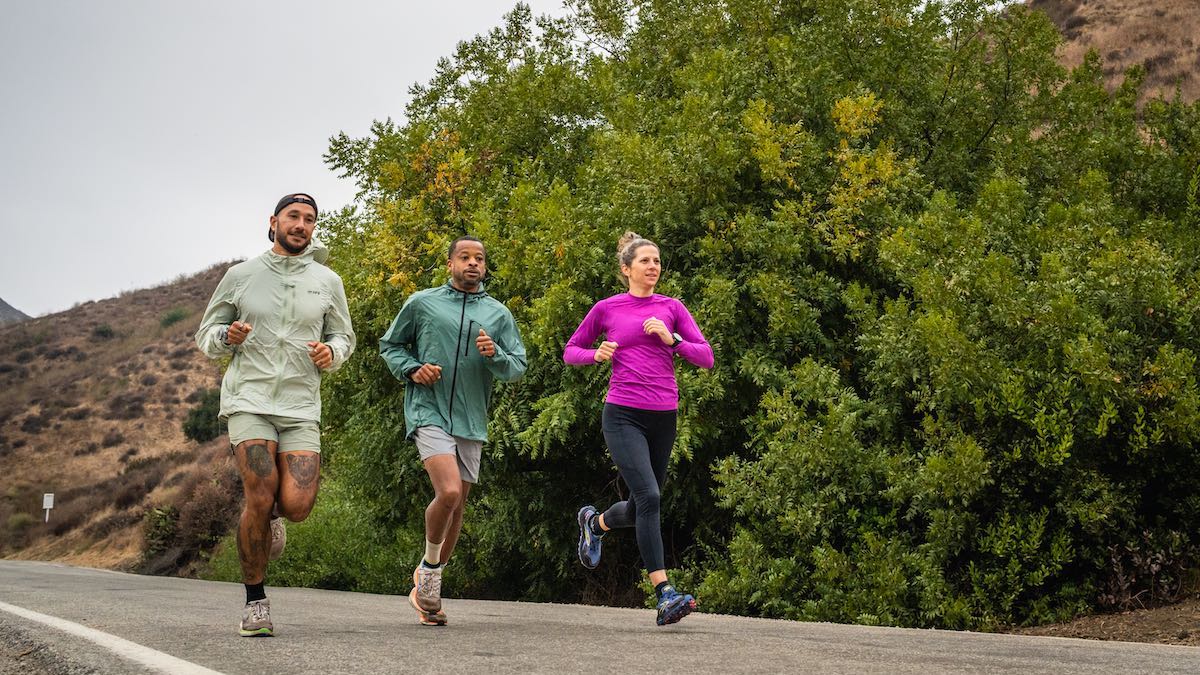
Testing road running shoes in California’s Ventura County. Photo: iRunFar/Eszter Horanyi
While there’s no best road running shoe for every situation and person, some definitely rise above the rest. While iRunFar’s roots are in trail and ultrarunning, most of us got our start running on the roads and still hit the pavement. To create this guide, we tapped into our road running network of testers training for races from 10k to the full marathon and also queried our trail-focused testers who regularly run on roads.
After testing dozens of shoes over thousands of miles, our favorite road-specific shoe is the Nike Pegasus 41, thanks to its lightweight comfort and smooth ride. However, we also love the Hoka Clifton 10 for everyday runs and the New Balance FuelCell Rebel v5 as a daily trainer that can also serve as a workout and race shoe.
If you’re looking for a specific type of road running shoe, you can also check out our Best Cushioned Road Running Shoes guide or our Best Stability Running Shoes guide. Check out our Best Running Shoes guide to view a mix of our favorite road and trail shoes, and our Best Marathon Shoes guide for anyone training for the 26.2-mile distance. Otherwise, read on, and be sure to look at our testing methodology, buying advice, frequently asked questions, and a roundup of road running shoe lingo below our top picks.
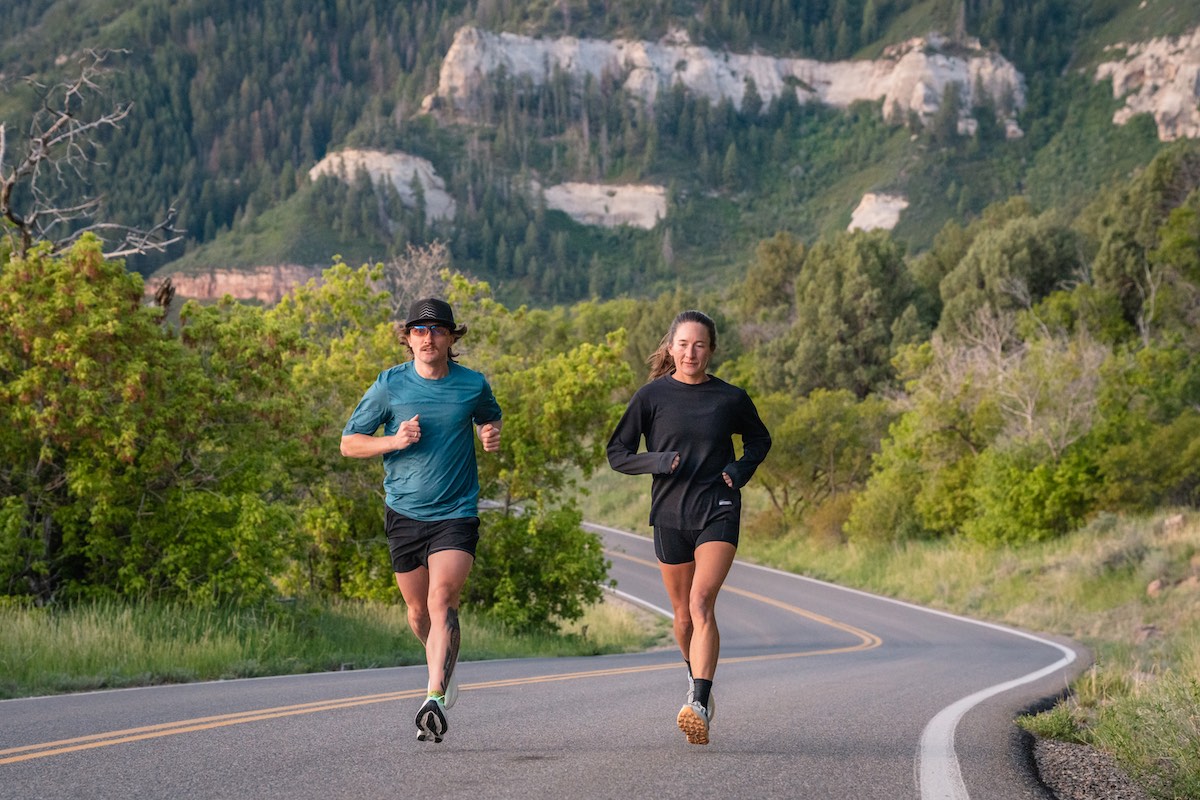
We logged thousands of miles on paved and gravel roads to find the best road running shoes. Photo: iRunFar/Eszter Horanyi
Best Road Running Shoes
- Best Overall Road Running Shoe: Nike Pegasus 41
- Best Overall Road Running Shoe — Runner-Up: Hoka Clifton 10
- Best Cushioned Road Running Shoe: Nike Vomero 18
- Best Stability Road Running Shoe: Saucony Guide 18
- Best Zero-Drop Road Running Shoe: Altra Provision 8
- Best Road Running Shoe for Tempo Runs: New Balance FuelCell Rebel v5
- Best Road Running Shoe for Racing: Hoka Rocket X 3
- Other Great Road Running Shoes: Asics Novablast 5, Brooks Ghost 17, and New Balance Fresh Foam X 1080v14
Best Overall Road Running Shoe: Nike Pegasus 41 ($140)
- A classic running shoe at an excellent value
- Excellent all-around shoes for pavement, gravel, and dirt
- Durable
- Will work for most runners
Cons:
- Some folks found the sizing off on this model
The Nike Pegasus 41 is the most classic running shoe the Beaverton, Oregon-based brand offers. As the 41 indicates, the shoe has been around for more than four decades and is Nike’s most popular daily trainer. The latest version features several updates, making it one of the best daily road running shoes available on the market. At the bottom, Nike employs its waffle-inspired outsole, which increases the shoe’s versatility by allowing it to handle non-technical dirt and gravel paths and roads with ease.
Moving up the shoe, Nike uses its new ReactX foam for the midsole, which the brand claims to be 13% more responsive than the previous version of the React foam. Air Zoom units placed in the heels also help boost responsiveness. The shoe features an upgraded engineered mesh upper and plush tongue. The result is an incredibly comfortable, smooth, and fun shoe. It’s also quite durable, and you should get well over 300 miles on it.
If you’re looking for a pure, maximum-cushion road shoe, we recommend the Hoka Clifton 10 reviewed below. But if you’re looking for a more versatile shoe that can handle multiple surfaces outside of pavement and could work for some lighter uptempo or fartlek work, we highly recommend the Nike Pegasus 41. Because of its versatility and approachability, we named it a great beginner shoe in our Best Half Marathon Shoes guide. The only potential downside to this shoe is its 10-millimeter drop, which may be too much for some people.
You can read more about this shoe in our in-depth Nike Pegasus 41 review.
Actual Weight (U.S. men’s 9): 10.4 ounces (297 grams) | Drop: 10 millimeters

The Nike Pegasus 41 is our favorite road running shoe in part because of its versatility provided by the waffle-inspired rubber outsole. Photo: iRunFar/Eszter Horanyi
Shop the Women's Nike Pegasus 41Shop the Men's Nike Pegasus 41
Best Overall Road Running Shoe — Runner-Up: Hoka Clifton 10 ($150)
- A cushioned road running shoe that works great for everyday running
- Super comfortable and excellent for recovery runs
Cons:
- Not as responsive in speed sessions as other top picks
Like the Pegasus 41 above, the Hoka Clifton 10 is one of the most popular road running shoes available today. The Clifton is a super comfortable, stable, maximum-cushioned running shoe with good durability, a reasonable weight, and a moderate heel-to-toe drop. It excels as a daily trainer for anything from short recovery jogs to long runs. In other words, it works for newbies running their first 5k to experienced marathoners logging runs of 20 miles or more.
Starting at the bottom, we were impressed with the durability of Hoka’s durable abrasion rubber outsole. After 100-plus miles of testing, there was little to no wear or tear. While the outsole isn’t as versatile as the Nike Pegasus 41 — we experienced slipping and sliding when taking the Cliftons on crushed rock and gravel surfaces — it is excellent for paved surfaces.
Moving up the shoe, the midsole and upper are where the Clifton truly shines. The midsole features Hoka’s popular compression-molded EVA foam. The midsole foam is incredibly lightweight, stable, and responsive, especially considering its high stack height of 42 millimeters at the heel. The upper features a highly breathable jacquard knit upper that hugs the foot in the best way.
Hoka made two updates to the Clifton 10 that the line’s disciples might notice. There is some added width in the forefoot area and three additional millimeters of heel-to-toe drop (from five to eight millimeters). Our primary tester has a wider forefoot, so appreciated the slight change. He also didn’t notice the increase in drop. He is a Clifton nerd, running in Cliftons since their original release in 2014, and didn’t notice any major feel differences from the previous version.
You can read more about this shoe in our in-depth Hoka Clifton 10 review.
Actual Weight (U.S. men’s 10): 9.8 ounces (278 grams) | Drop: 8 millimeters
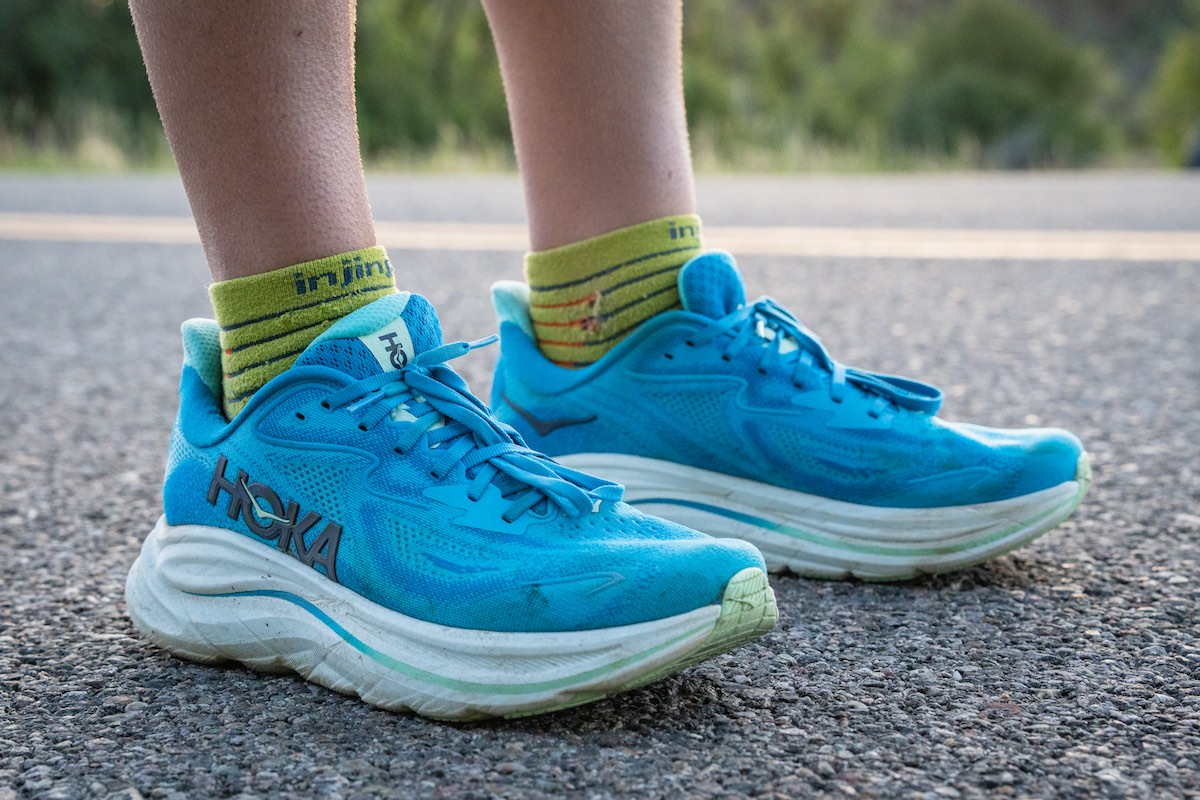
The Hoka Clifton 10 are excellent everyday trainers for road running. Photo by: iRunFar/Eszter Horanyi
Shop the Women's Hoka Clifton 10Shop the Men's Hoka Clifton 10
Best Cushioned Road Running Shoe: Nike Vomero 18 ($155)
- Excellent cushioning
- Doesn’t feel as clunky as similarly cushioned shoes
- Good for larger-framed runners
Cons:
- The outsole isn’t as versatile as the previous version
The Nike Vomero 18 got a complete revamp, so if you’ve run in previous models of the shoe, we recommend being flexible with your mindset and expectations for the latest version. Already a highly cushioned running shoe, Nike upped the maximum-cushioned ante, raising the heel stack height from 40 to 46 millimeters and the forefoot stack height from 30 to 36 millimeters. The other significant change was modifying the outsole to have less waffle-inspired rubber, which decreased the shoe’s ability to handle multiple surfaces, such as crushed rock and gravel.
Still, this shoe is an excellent choice, especially for those seeking a highly comfortable and maximally cushioned road running shoe. Starting with the upper, Nike added some padding to the tongue for increased comfort, and the engineered mesh material that makes up the upper is highly breathable. Moving to the midsole, the Vomero 18 has an interesting blend of ZoomX foam placed on top of ReactX foam. Both are Nike’s premium midsole foams, playing a significant role in why the Vomero remains lightweight, responsive, and fun despite the increased stack height and weight compared to previous versions.
On the outsole, Nike still uses the waffle-inspired rubber found on the last version of the Vomero, except less of it. Nike removed some of it to create what they are calling pods of rubber and claim that the new design helps the heel-to-toe transition. This exposes more midsole foam to pavement and is our one major dock on the shoe. The previous version was more akin to the Pegasus 41 and could handle dirt and gravel, something that this shoe struggles with.
Still, the Nike Vomero 18 is a solid choice for road runners seeking a maximally cushioned shoe. We’d argue it’s one of the best in terms of not feeling clunky with the extreme amount of underfoot stack and plush midsole foams.
Actual Weight (U.S. men’s 10): 11.3 ounces (320 grams) | Drop: 10 millimeters
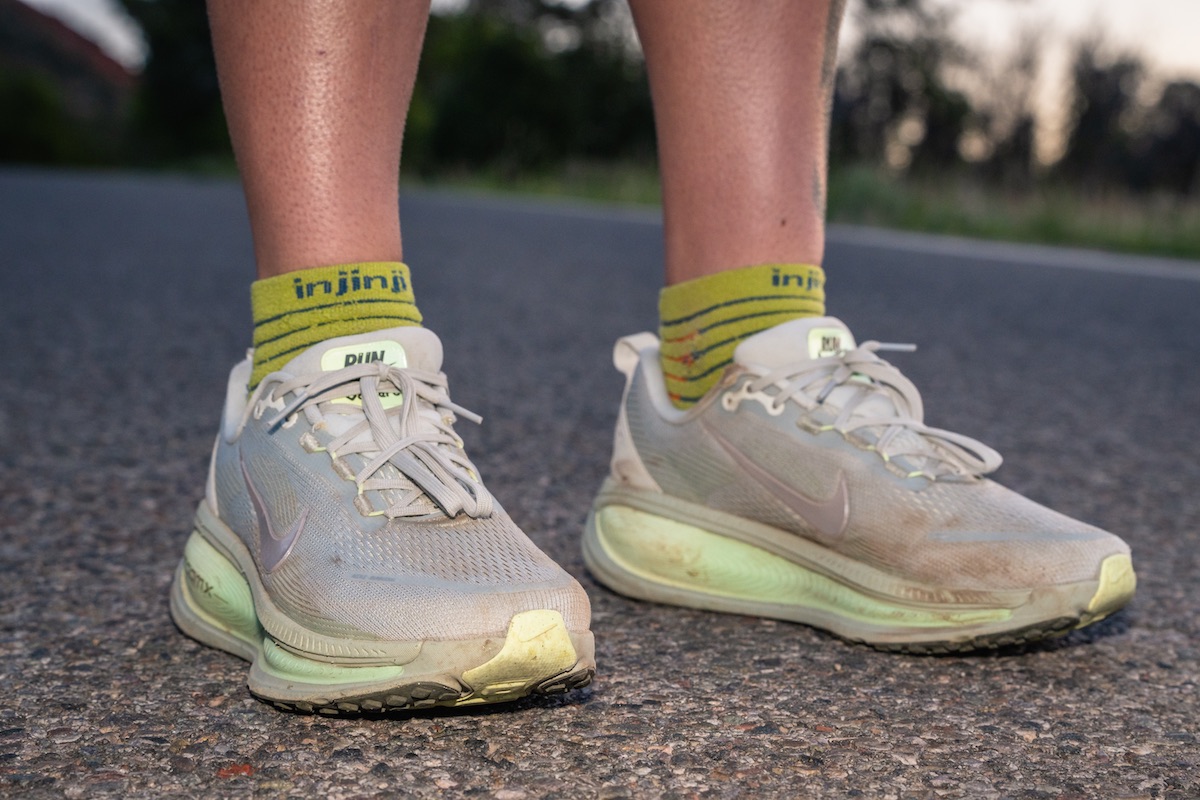
The Nike Vomero 18 is an excellent maximum-cushioned road running shoe. Photo by: iRunFar/Eszter Horanyi
Shop the Women's Nike Vomero 18Shop the Men's Nike Vomero 18
Best Stability Road Running Shoe: Saucony Guide 18 ($150)
- A light and breathable stability shoe for everyday road running
Cons:
- It can feel a little flat when you pick up the pace
The Saucony Guide 18 is a classic stability road running shoe. While the shoe got fairly significant changes during the last update, the Guide 18 stays close to the same as the 17 with only a couple of updates to the upper. In our eyes, that’s a good thing. Saucony added heel collar foam that provides a more locked-in feel and more breathable material throughout the upper portion of the shoe, making it better for warmer temperatures.
Saucony still employs its CenterPath technology for added stability, which was the major change when the brand retooled the Guide 17. The CenterPath technology creates a wider base platform with sidewalls designed to cradle your feet. This design replaces the medial guide post in the Guide 16, and we found it creates an extra stable and comfortable ride without going overboard with excessive stability or clunkiness. Saucony uses its PWRRUN cushioning and PWRRUN+ sockliner to boost the shoe’s comfort.
Our one nitpick with the shoe is similar to the problem we had with the Vomero 18: the zonal rubber outsole that exposes midsole foam to the ground. We get that brands are trying to cut down on the shoe’s weight, but we’d appreciate it if they did it elsewhere. In our experience, removing sections of the rubber outsole decreases the shoe’s versatility and durability — two qualities that are highly important to us.
Claimed Weight (U.S. men’s 9): 9.6 ounces (272 grams) | Drop: 8 millimeters
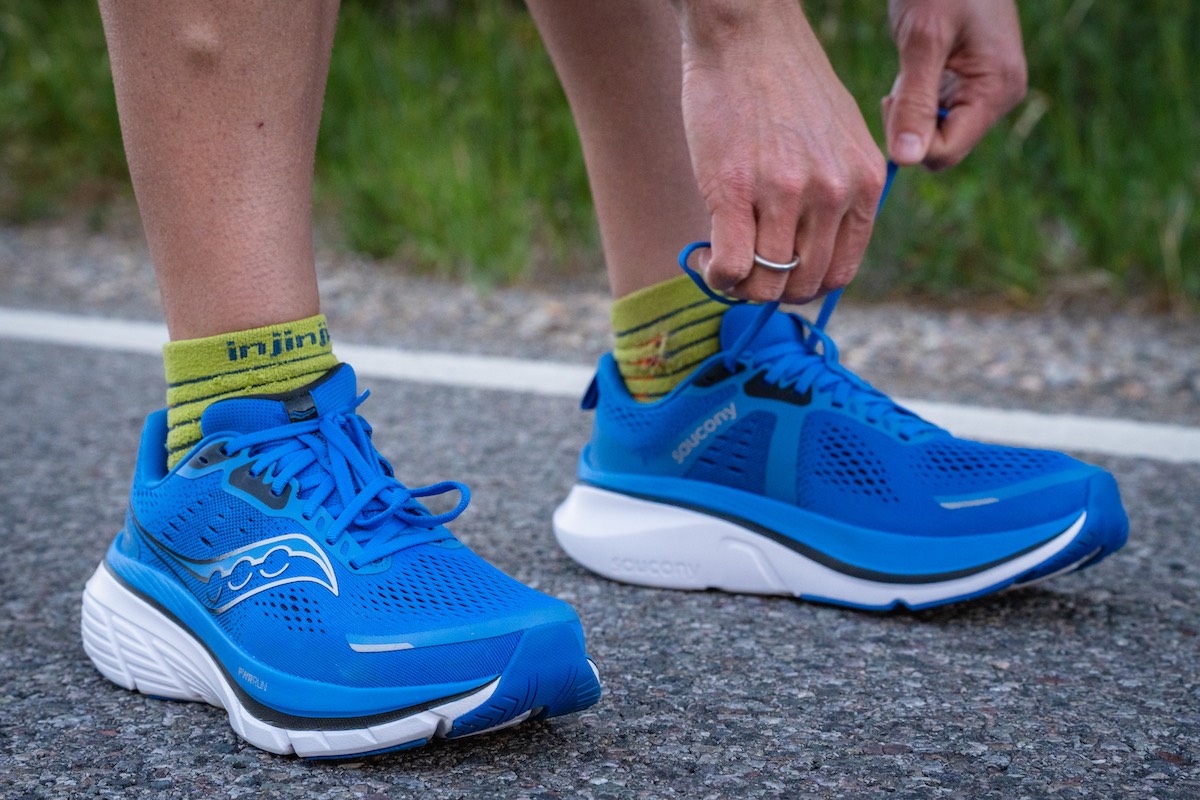
The Saucony Guide 18 is one of the best stability road running shoes on the market. Photo: iRunFar/Eszter Horanyi
Shop the Women's Saucony Guide 18Shop the Men's Saucony Guide 18
Best Zero-Drop Road Running Shoe: Altra Provision 8 ($140)
- Stability makes the zero-drop a bit more approachable, especially for zero-drop newbies
- Good value
- Excellent comfort
Cons:
- A bit on the heavy side
The recently updated Altra Provision 8 is a great everyday road running shoe for those who love the grounded feeling that zero-drop shoes provide and the roomy toebox for which Altra is known. The Provision is also the brand’s light stability shoe, meaning it’ll provide some support to runners who overpronate. That stability support comes from Altra’s GuideRail Technology.
Starting at the bottom of the shoe, Altra employs its basic rubber outsole which is reasonably durable and provides good grip. Moving up the shoe, Altra employs its EGO midsole cushioning. While the shoe has a relatively mild stack height of 28 millimeters, our primary tester, who loved the shoe, said it felt like he was running on clouds. The EGO foam is also decently responsive, making it a solid and fun ride. The shoe’s upper is made from breathable engineered mesh.
This version of the shoe has a few updates. First is a broader footprint, which Altra says creates a more stable ride. If you’re wondering how Altra could create an even broader footprint than the previous version, know that we were also skeptical if this was needed. That said, we didn’t find it overly wide and were still able to lock down our feet in the shoe. That’s probably in part thanks to a new heel collar design. Although Altra says it removed some outsole thickness to reduce the shoe’s weight, it’s definitely still on the heavier side.
Actual Weight (U.S. men’s 9): 10.2 ounces (289 grams) | Drop: 0 millimeters
Shop the Women's Altra Provision 8Shop the Men's Altra Provision 8
Best Road Running Shoe for Tempo Runs: New Balance FuelCell Rebel v5 ($140)
- Super lightweight and responsive
- Plush with cushion
- A true “do-everything” shoe that works for easy days, long runs, and speed workouts
Cons:
- Better traction in this version, but still behind other shoes in this guide
The New Balance FuelCell Rebel v5 is truly a steal. And we mean that in the best way possible. Designed as a daily trainer, this shoe can also serve as a workout shoe for fast miles, and is a solid entry-level racing shoe thanks to its relatively affordable price point. Even more impressive, New Balance upgraded every aspect of the shoe — the outsole, midsole, and upper — while maintaining the same price as the previous version.
In our opinion, the meat of what makes this shoe excel is the PEBA/EVA foam blend in the midsole. It’s incredibly responsive and lightweight and almost feels like it has a carbon plate. It’s that good at higher speeds. New Balance also increased the stack height at the midsole, making the shoe softer without losing any responsiveness or propulsiveness from the previous version. We also love the upgrade to the upper, which is a breathable engineered mesh. New Balance changed the heel and tongue design, adding some cushioning that we thought increased the comfort compared to the v4.
Lastly, New Balance added more grippy rubber at the shoe’s forefoot. Our only major complaint about the previous version was how slippery it was, especially on wet pavement, so we appreciate New Balance making an effort to fix that. Still, it’s one of the less grippy shoes on this list. This version is also slightly heavier than the previous version, but at just 8 ounces for a men’s size 9, it’s still an incredibly light shoe.
Claimed Weight (men’s U.S. 9): 8.0 ounces (212 grams) | Drop: 6 millimeters
Shop the Women's New Balance FuelCell Rebel v5Shop the Men's New Balance FuelCell Rebel v5
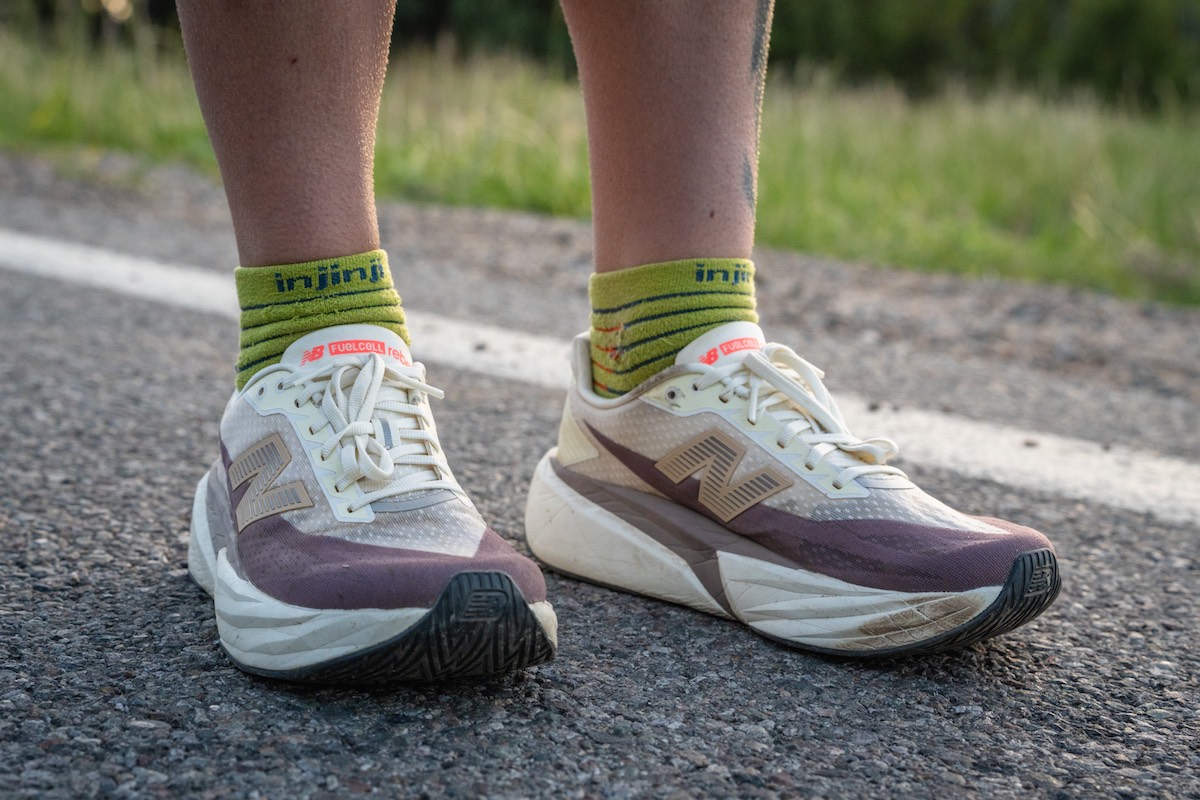
The New Balance FuelCell Rebel v5 road running shoes are great for anyone looking for daily trainers that can double as tempo or workout shoes even race shoes. Photo: iRunFar/Eszter Horanyi
Best Racing Road Running Shoe: Hoka Rocket X 3 ($250)
- Very bouncy, propulsive, and efficient
- Works well from 5k to marathon
- Good entry-level super shoe
Cons:
- Not the lightest racing shoe
The Hoka Rocket X 3 is the brand’s premier road racing shoe, similar to Nike’s Alphafly or Vaporfly, Asics’ Metaspeed Sky and Edge, and Saucony’s Endorphin Elite. What sets the Rocket X 3 apart from other carbon-plated super shoes is its accessibility. It has a ride and feel that’s not as aggressive as other super shoes, making it ideal for those testing the super shoe waters, or runners who want to run faster and PR in road races without paying for the highest-end super shoes. And while $250 is still admittedly a lot to pay for a pair of running shoes, it’s at the lower end of the super shoe price spectrum.
Hoka added a few updates to this version of the shoe. Starting at the bottom, new rubber sections to improve traction. We’ve been able to take the Rocket X 3s on runs on wet pavement and gravel roads, and the improvements have definitely helped. It’s still not ideal for for surfaces other than dry pavement, but compared to other super shoes, the grip is definitely better. Moving up, Hoka employs its dual-density PEBA foam for the midsole. Like the previous version, the midsole foam is springy and responsive. Hoka also updated its carbon plate with winglets to help with stability and propulsion. Overall, the Rocket X 3 is probably the most stable road racing super shoe we’ve run in. That said, the bar is set pretty low, so don’t expect it to feel like a regular stability shoe or daily trainer. However, that boosted stability helps make this a good entry into super shoes. At the top of the shoe, Hoka uses a single-layer engineered mesh upper that we found quite breathable.
Is this the fastest road racing shoe available? No. At 8.0 ounces, it’s also not the lightest. But we believe it’s the most approachable and suitable super shoe for the most number of runners. It’s not overly aggressive and jarring, which could turn off beginner or intermediate runners. Its structure and rocker allow runners to comfortably run at many paces, instead of just fast.
Actual Weight (U.S. men’s 9): 8.0 ounces (239 grams) | Drop: 7 millimeters
Shop the Hoka Rocket X 3 (unisex)Other Great Road Running Shoes
Asics Novablast 5 ($150)
- Bouncy with excellent energy return
- Comfy right out of the box
- Versatile as a daily trainer and faster miles
Cons:
- One tester had issues locking down the heel
The Asics Novablast 5 is an excellent everyday trainer. One tester called it his “favorite road trainer by far.” The high praise comes from the shoe’s bounce and energy return. Another tester reported, “Right out of the box, the shoe felt lightweight, soft, and springy underfoot, which made me want to wear them for everything from recovery runs to moderate workouts.”
The shoe’s energy return and bounce are in part due to the biggest change made to the Novablast 5 — its FF Blast Max midsole foam. With a stack height of 41.5 millimeters at the heel and 33.5 millimeters at the forefoot, it’s a lot of underfoot cushioning. But because of the springy responsiveness, it doesn’t feel like that much underfoot stack. The stack and responsiveness gave our testers confidence in using the Novablast 5 as daily trainers, for long runs, and lighter speed workouts. Next, Asics employs a trampoline-inspired outsole that also helps with efficiency. The outsole also provides good traction, as one of our testers took it regularly onto crushed rock running paths and trails, and the mesh upper is also breathable and comfortable.
Claimed Weight (men’s U.S. 9): 9.0 ounces (255 grams) | Drop: 8 millimeters
Shop the Women's Asics Novablast 5Shop the Men's Asics Novablast 5
Brooks Ghost 17 ($150)
- Good all-around trainer
- Traction is good enough for dirt and gravel roads
Cons:
- We’d like to see less cushioning for more breathability in the upper
One of our testers summed the Brooks Ghost 17 best when he said it’s better than the sum of its parts. This isn’t a high-frills shoe, but it gets the job done and is a very solid daily trainer. The newest iteration of the Ghost comes with a few upgrades. In the midsole, Brooks added more of its nitro-infused cushioning in both the heel and forefoot. It also changed the upper to an air mesh material, and it added flex grooves in the outsole to improve the heel-to-toe transition.
Despite the improved breathability, our tester’s one nitpick of the upper was that some cushioning could be cut for improved breathability, although he did concede that the cushioning helps make this a super comfortable shoe. Moving down, our main tester approved of the updated midsole foam and stack height, saying it’s a comfortable and responsive shoe that maintains stability despite the higher stack height. The outsole allowed him to run on some packed dirt trails, but he did say that after 100 miles, it was the first area to show some wear and tear.
Overall, the Brooks Ghost 17 is a solid trainer, good for daily runs.
Claimed Weight (men’s U.S. 9): 10.1 ounces (286 grams) | Drop: 10 millimeters
Shop the Women's Brooks Ghost 17Shop the Men's Brooks Ghost 17
New Balance Fresh Foam X 1080v14 ($165)
- Comfortable upper
- Plenty of cushion
- Seamless heel-to-toe transition
Cons:
- Not very responsive
- Smaller toebox
The New Balance Fresh Foam X 1080v14, otherwise known as the 1080, is the latest in a line of shoes that has been trusted throughout its many versions. This newest update comes with an engineered mesh upper that replaces the old knit mesh one, and we found that it provides better lockdown and a secure fit throughout the foot.
We did notice that the toebox had a tighter fit than previous versions of this shoe, most likely due to the new upper material being less stretchy than the older version. If you have high-volume feet, you might feel a bit restricted at the front of this shoe. But the shoe comes in narrow, standard, wide, and extra-wide options so that it can accommodate a variety of foot sizes and shapes.
The midsole features the brand’s Fresh Foam, a soft cushioning material. With a 36-millimeter stack height under the heel, there’s plenty of material to provide a cushioned ride. The 6-millimeter drop is 2 millimeters less than the previous version of the shoe, but the adjustment is minor enough that most fans of the shoe won’t notice a significant difference. We found that the shape of the midsole and outsole provides a nice heel-to-toe transition, and this is an excellent shoe for putting in long miles.
If you’re looking for a highly responsive shoe, this probably isn’t your best choice, but if comfort is at the top of your list, especially as the miles rack up, it’s a solid option. You can also find this shoe in our Best Cushioned Running Shoes guide.
Actual Weight (U.S. men’s 9): 10.3 ounces ( 292 grams) | Drop: 6 millimeters
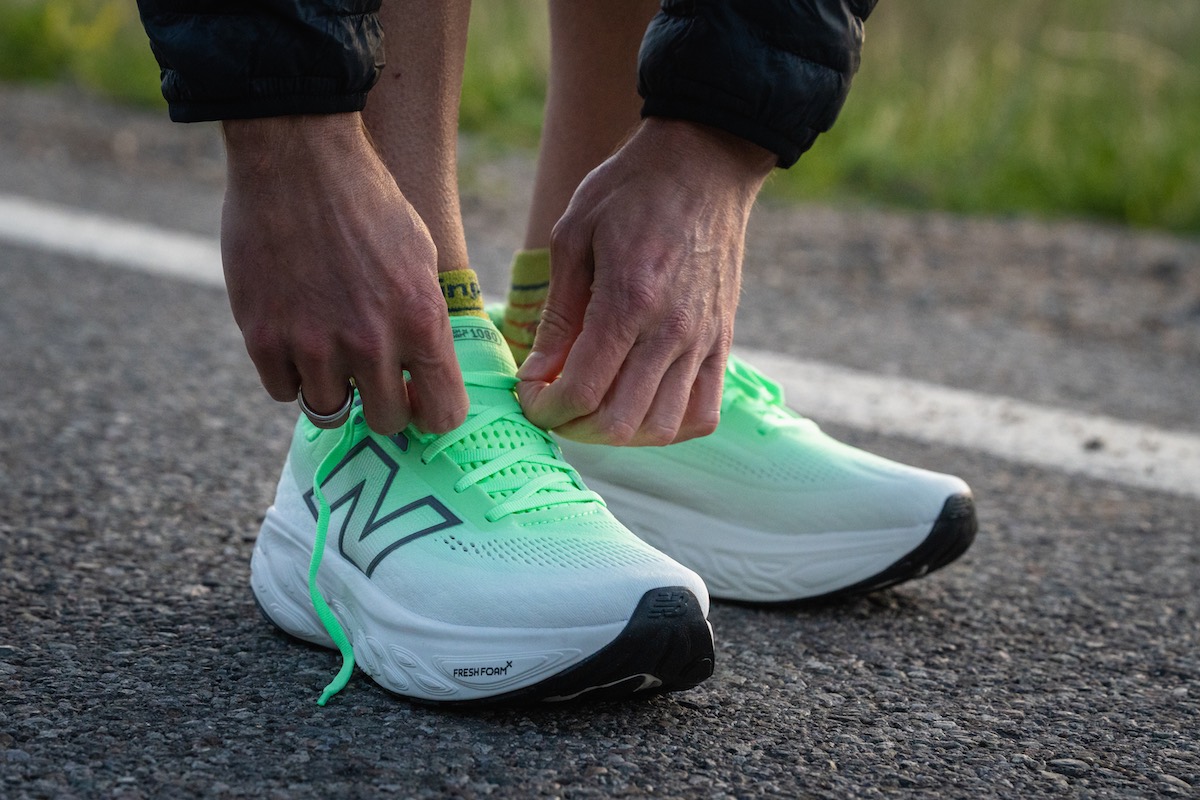
The New Balance Fresh Foam X 1080v14 is good for daily miles. Photo: iRunFar/Eszter Horanyi
Shop the Women's New Balance Fresh Foam X 1080v14Shop the Men's New Balance Fresh Foam X 1080v14
Comparing the Best Road Running Shoes
| SHOE | PRICE | WEIGHT | DROP | CUSHION |
| Nike Pegasus 41 | $140 | 10.4 ounces | 10 millimeters | Moderate |
| Hoka Clifton 10 | $150 | 9.8 ounces | 8 millimeters | Maximum |
| Nike Vomero 18 | $155 | 11.3 ounces | 10 millimeters | Maximum |
| Saucony Guide 18 | $150 | 9.6 ounces | 8 millimeters | Moderate |
| Altra Provision 8 | $140 | 10.2 ounces | 0 millimeters | Moderate |
| New Balance FuelCell Rebel v5 | $140 | 8.0 ounces | 6 millimeters | Maximum |
| Hoka Rocket X 3 | $250 | 8.0 ounces | 7 millimeters | Maximum |
| Asics Novablast 5 | $150 | 9.0 ounces | 8 millimeters | Maximum |
| Brooks Ghost 17 | $150 | 10.1 ounces | 10 millimeters | Moderate |
| New Balance Fresh Foam X 1080v14 | $165 | 10.3 ounces | 6 millimeters | Moderate |
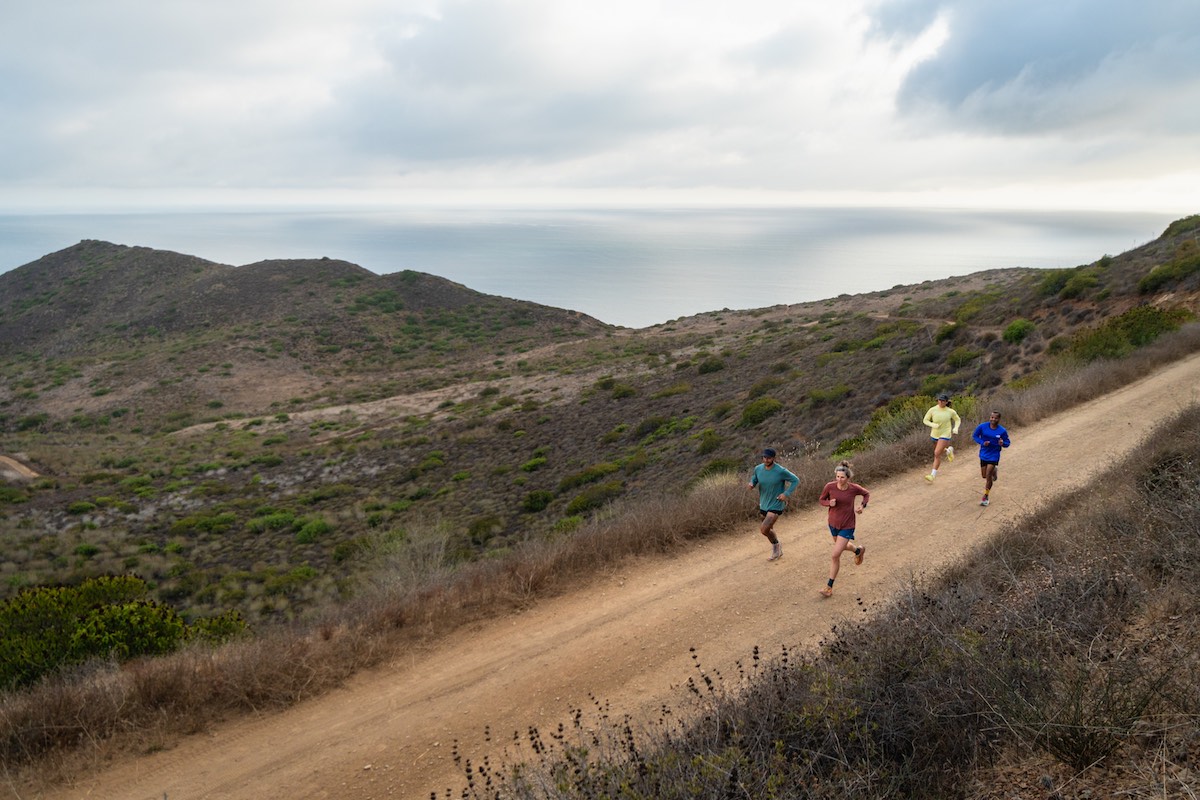
We regularly test road shoes on gravel and dirt roads and paths to test their versatility. Photo: iRunFar/Eszter Horanyi
Glossary
- Heel-to-Toe Drop – The difference in height between the heel and the toe of the shoe, most often measured in millimeters. Often called offset or drop for short.
- Midsole – The middle layer of foam between a shoe’s upper and outsole that provides cushioning.
- Outsole – The bottom part of the shoe that comes into contact with the ground and provides traction.
- Upper – The entire top of the shoe.
- Toebox – The area surrounding the ball of the foot and toes. They can come in a variety of widths depending on the shape and purpose of the shoe.
- Stack Height – The combined height of a shoe’s outsole and midsole. Higher stack heights generally indicate more cushioning.
- Pronation – The natural collapse of the foot’s arch while standing, walking, or running that provides natural shock absorption in a gait.
- Overpronation – Excess arch collapse that can lead to issues with arches, ankles, Achilles tendons, shins, outer knees, and/or outer hips.
- Supination – A lack of arch collapse that results in the outer foot absorbing most of the impact of a stride. It can cause plantar fasciitis and/or pain in the pelvis and lumbar spine. This is also referred to as under-pronation.
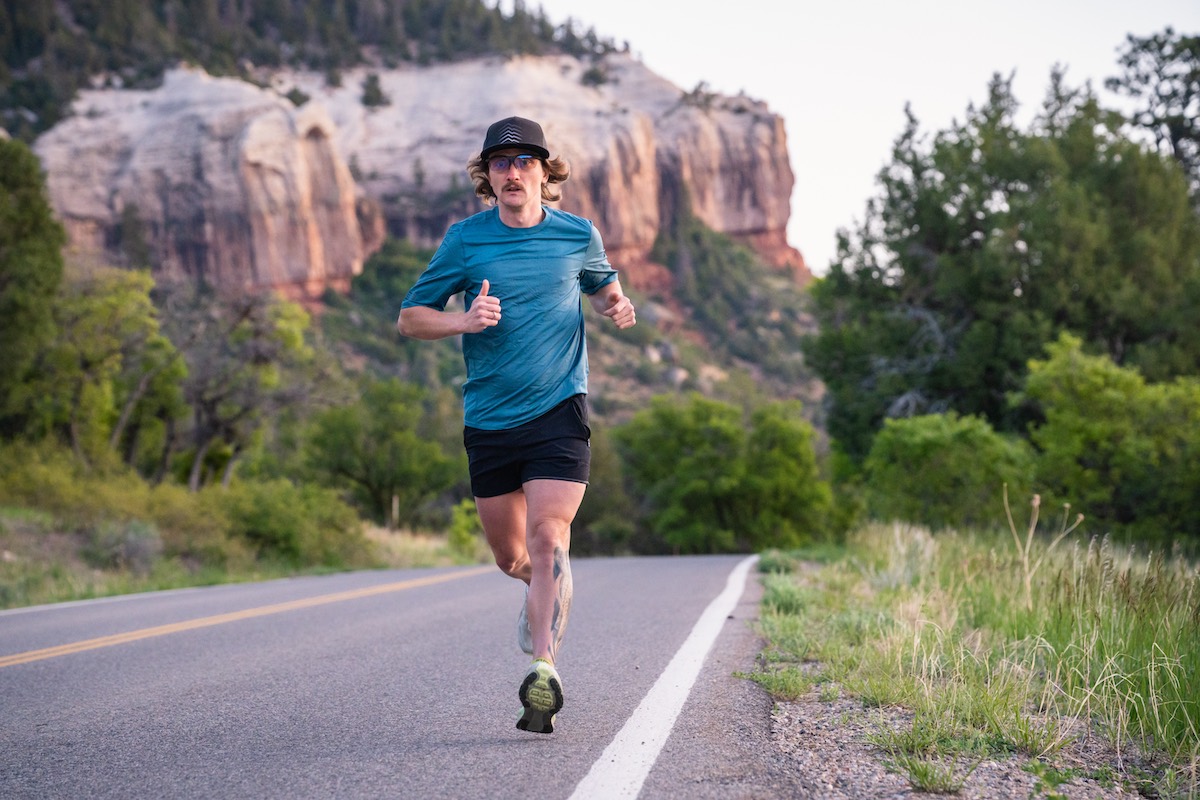
Testing the Nike Vomero 18s outside of Durango, Colorado. Photo: iRunFar/Eszter Horanyi
How to Choose Everyday Road Running Shoes
Road Running Shoes Versus Trail Running Shoes
An easy way to understand the difference between road and trail shoes is to compare road and mountain bike tires. Road bike tires have a smooth surface meant to glide quickly across smooth surfaces with minimal friction. On the other hand, mountain bike tires have beefy lugs to provide more traction and grip to help move across loose and uneven surfaces.
It’s the same with road and trail running shoes. Road shoes, like the ones featured in this guide, have smooth outsoles and are meant for pavement or smooth gravel roads. Trail shoes will have beefy lugs on the outsoles and sometimes also have additional features like rock plates and extra protection around the toebox to help deal with rocks and roots on the trail. You can explore our favorite options for trail shoes in our Best Trail Running Shoes guide.
If you primarily run on the roads, trail shoes are probably overkill, and the big lugs can be uncomfortable for running on smooth, hard surfaces. Howerever, if you run most days of the week throughout the year, having a few road and trail shoes to rotate during your training is a good idea.
If you’re looking for a daily workhorse of a road running shoe, the Hoka Clifton 10 and Brooks Ghost 17are durable and comfortable. We found that the outsole of the Nike Pegasus 41 provided enough grip to feel secure on gravel and dirt roads without feeling sticky on pavement.
Different Types of Road Running Shoes
Finding the best road running shoes can be overwhelming and intimidating. Shoes are designed differently for various tasks, such as everyday running, workouts, and racing. And within those different categories are shoes with varying cushion, drop, and stability levels. While plenty of road running shoes have specializations for specific situations, the road running shoes in this guide are ideally suited for everyday running at a comfortable pace, though they’ll get the job done in a workout or race. Lighter and bouncier shoes like the Hoka Rocket X 3 and the New Balance FuelCell Rebel v5 will perform a little better in speedier sessions.
To choose the best road running shoes for your goals, determine what type of runner you are and want to become. Are you looking for training shoes to run a few days or more a week? Then, an everyday trainer like the Hoka Clifton 10 or Brooks Ghost 17 is great. Having two or three pairs of shoes to choose between can help prevent overuse injuries while keeping your training fun and interesting. If you plan on running faster workouts, like tempos or intervals, or running in races, you may want a pair of lightweight and responsive shoes, like the New Balance FuelCell Rebel v5.
Next, you’ll want to decide on the level of stability and cushion you prefer. Generally, low or flat arches respond best to stability shoes, while mid to high arches work best in neutral shoes. Note that these are generalities, and it’s best to visit a specialty running store for a foot and gait analysis if you can. The Saucony Guide 18 is our favorite stability shoe for overpronators. For maximum cushioned shoes, we love the Nike Vomero 18 and Asics Novablast 5.
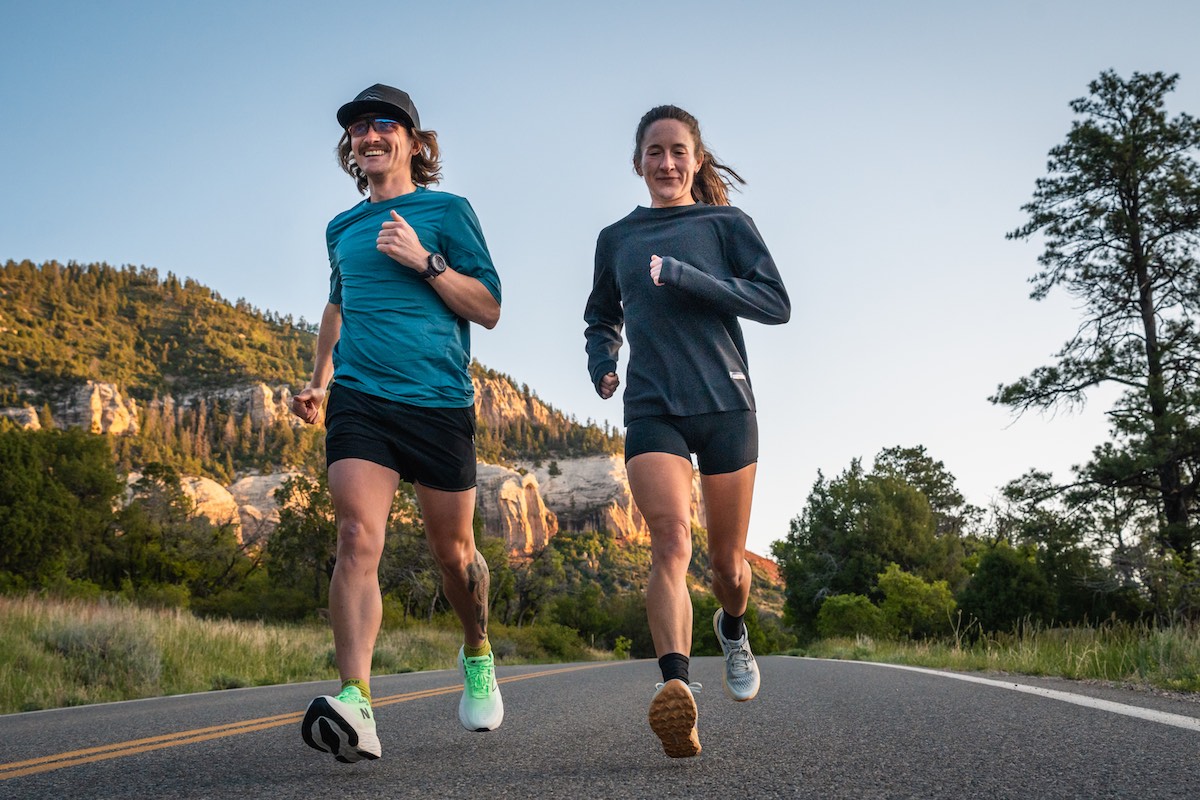
The New Balance Fresh Foam 1080×14 (left) are solid daily trainers. Photo: iRunFar/Eszter Horanyi
Stability Versus Neutral Running Shoes
The main difference between neutral and stability shoes is that neutral shoes allow the feet to move and flex naturally, while stability shoes help guide the foot into a certain position to help prevent overpronation. The Saucony Guide 18 is our favorite stability shoe, and you can explore more options in our Best Stability Running Shoes guide.
Our advice before buying a pair of running shoes is to have an expert at a local running specialty store examine your gait. Most people pronate some, but if you overpronate and your feet roll inward after impact with the ground, you might consider a stability shoe. Stability shoes might also help if you’re prone to Achilles tendinitis, runner’s knee, or shin splints.
Another way to determine if you need stability shoes is to look at the wear pattern on the bottom of your current running shoes. If your shoes’ medial — or inward side — has more wear than the rest of your outsoles, you probably need stability shoes. Lastly, consider the height of your arches. It’s not always the case, but a general rule is that those with low or flat arches benefit more from stability shoes than those with medium or high arches.
The Nike Pegasus 41, Hoka Clifton 10, and Brooks Ghost 17 are neutral shoes that will work for runners who don’t overpronate.
Fit
Generally speaking, to determine your shoe size, you want to measure the length of your foot in inches and then size up a half to full size in running shoes, leaving about a thumb’s width of space between the end of your longest toe and the end of the shoe. While there can be slight differences between brands, most are pretty standardized. For example, a size 10 in Nike should also be a size 10 in Hoka.
You’ll also want to know your foot’s width. The basic rule is that you don’t want any part of your foot hanging off the midsole. Many shoe brands — like Hoka, Brooks, and New Balance — offer standard and wide-width models of specific shoes to fit more foot sizes and styles. The New Balance Fresh Foam X 1080v14 comes in narrow, standard, wide, and extra-wide options.
Getting the correct width is crucial to comfort and shoe longevity, as the upper can tear if the shoe’s width is too narrow for your foot. A shoe that is too wide will allow your foot to slide around. A good fit will give your toes some space to splay and wiggle but keep your feet from moving around inside the shoe. If you’re looking for a shoe with a wide toebox, consider the Altra Provision 8.
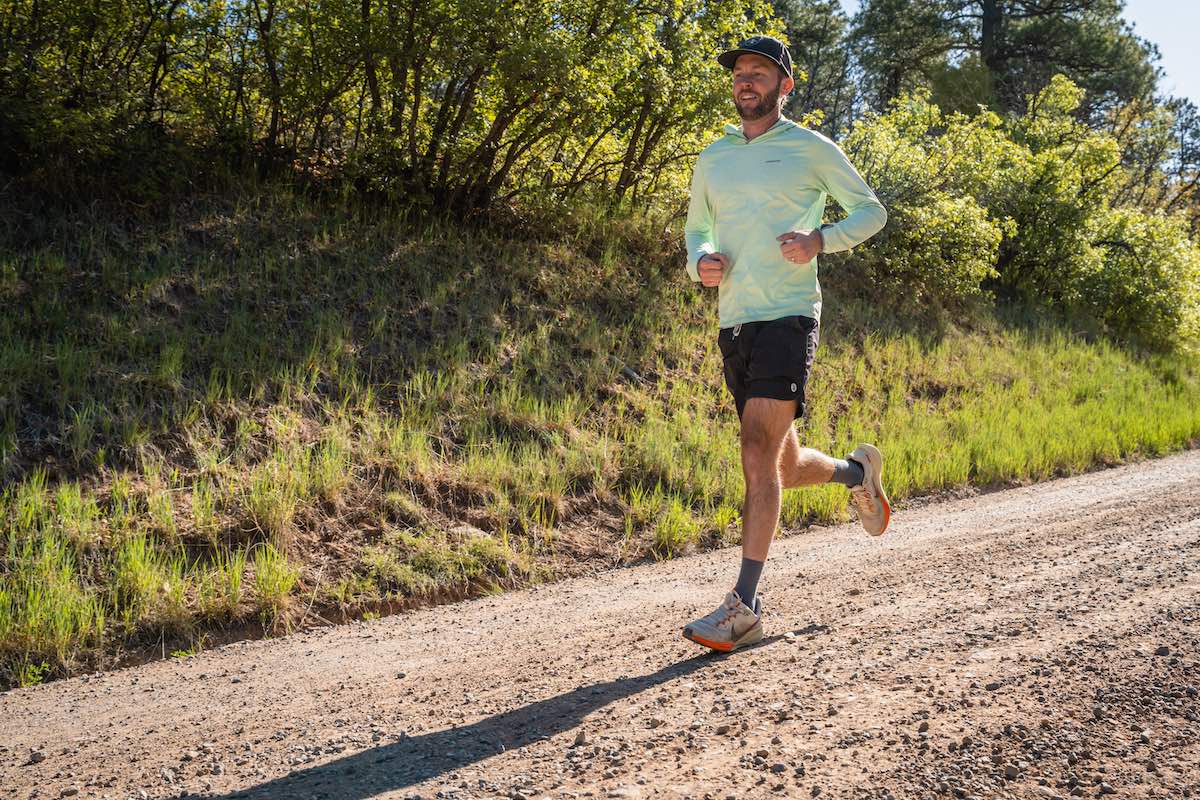
The versatility of the Nike Pegasus 41 makes it our favorite road running shoe. Photo: iRunFar/Eszter Horanyi
Toebox Shape
Like cushioning, toebox shape and size come down to personal preference. And like cushioning, toeboxes generally come in three styles — narrow, medium, and wide. If you prefer a snug fit around your toes, you’ll want to opt for a narrow or medium toebox. Narrow toeboxes are often associated with high-performance race shoes.
Pick a shoe with a wider toebox, like the Altra Provision 8, if you like some wiggle or splay room for your toes and are looking for comfort over long miles. The Nike Pegasus 41 has a fairly traditional toebox that’s not especially narrow or wide. The Hoka Clifton 10 has a slightly wider toebox but is still fairly average.

The Nike Pegasus 41 comes from a long line of well-loved shoes from the brand. Photo: iRunFar/Eszter Horanyi
Heel-to-Toe Drop Considerations
The heel-to-toe drop is the difference in a shoe’s stack height between the heel and the toe. Stack height is the distance between your foot and the ground and comprises the midsole and outsole. A common heel-to-toe drop typically falls in the 6- to 10-millimeter range. The Nike Pegasus 41 has a 10-millimeter drop, which is on the upper end of what most people find comfortable.
While the drop is typically a personal preference, you should consider some factors. For example, a higher heel stack height and drop might feel better and help with a smoother transition from the heel strike to the toe-off if you’re a hard heel striker. On the other hand, a lower drop can help with lower back tightness as it can help lengthen posterior muscles and tendons like the glutes and hamstrings.
However, you should probably avoid a low-drop shoe if you have had Achilles tendon issues or chronically tight calf muscles. The Altra Provision 8 is a zero-drop shoe, and if you’ve never run in them, you’ll want to transition into them gradually.
Arch Support
Every person’s feet and ankles move a little differently throughout the various parts of their gait. A foot’s arch will collapse slightly throughout a stride for shock absorption. If an arch collapses too much, the entire foot and ankle roll inward, commonly called overpronation. People who overpronate often have issues with their ankles, Achilles tendons, shins, knees, or hips. Low arches are often associated with overpronation, and stability shoes like the Saucony Guide 18 can guide your foot into a more neutral position.
On the other side of the spectrum, some people have high arches that don’t collapse enough during their stride, which is called underpronation or supination. This puts all of the impact on the outside part of the foot and can cause plantar fasciitis, pain in the pelvis, and issues with the lumbar spine.
The shape of your arch and how it moves throughout your stride determines the level of arch support you need in a shoe. Visiting a running store to have your gait analyzed is the best way to determine if you need extra arch support to stay injury-free and run comfortably.
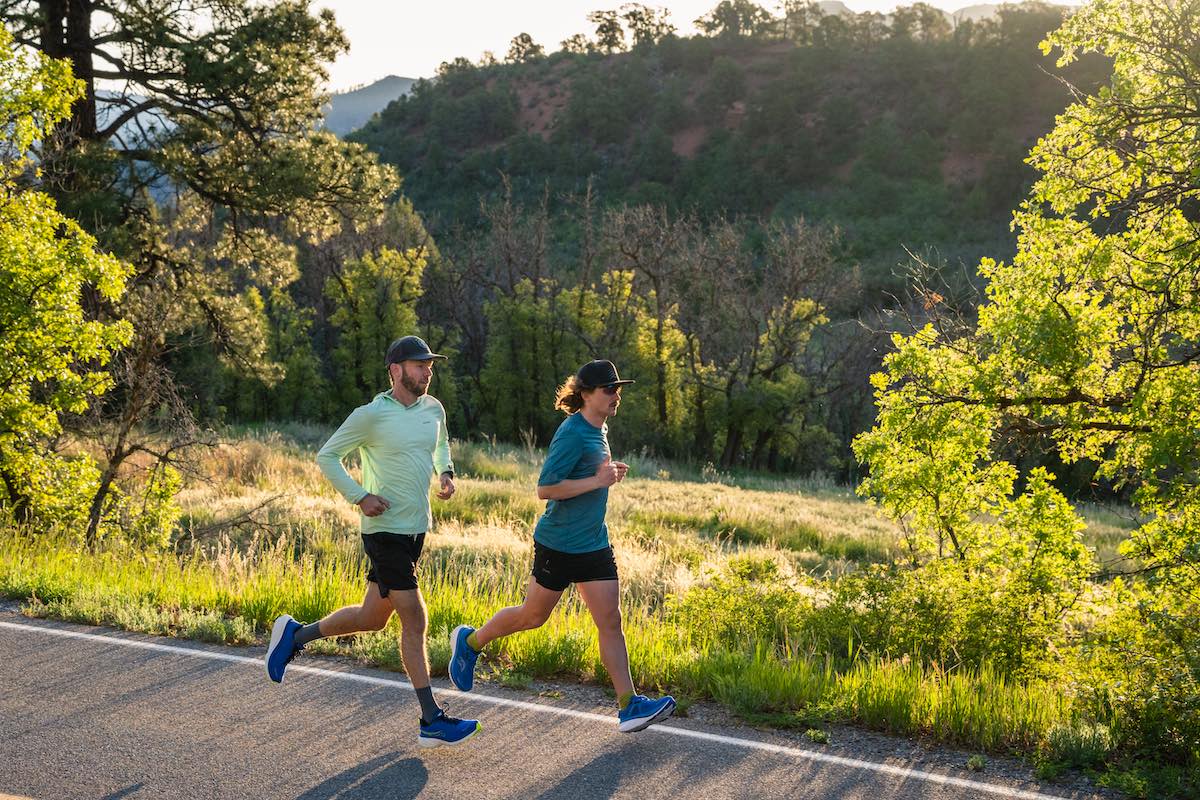
Testing Saucony road running shoes outside of Durango, Colorado. Photo: iRunFar/Eszter Horanyi
Uppers
The uppers of road shoes need to be durable enough to stand up to long miles while letting your feet breathe so they don’t get sweaty. Moisture buildup combined with friction and heat can lead to blisters, so lightweight uppers are crucial. Since road shoe uppers don’t frequently get scraped against rocks and roots like trail shoes do, they can be much lighter and breathable than their counterparts.
We selected many shoes in this guide for the comfort and breathability of their uppers. Our testers especially loved the upper of the Nike Pegasus 41, finding it stretchy, comfortable, and able to provide a secure lockdown.
Other Considerations
There are many other factors to consider when choosing the best road running shoes, including the amount you run and the primary surface you’re running on. You’ll also have to decide whether you want to do speedwork or participate in any races. You should also keep your previous running injuries in mind.
If you’re a high-volume runner, a well-cushioned shoe like the Hoka Clifton 10 or Asics Novablast 5 can provide impact protection for your joints, tendons, ligaments, and muscles, keeping you fresher over longer miles. Unfortunately, as the cushion of a shoe increases, its responsiveness typically decreases. Shoes with a lot of cushion have the potential to feel mushy or slow. If you intend to do a lot of speedwork, a highly cushioned shoe may feel significantly more sluggish than something with a firmer midsole and a lower stack height. The New Balance FuelCell Rebel v5 is a lightweight shoe ready to go fast, as is the Hoka Rocket X 3.
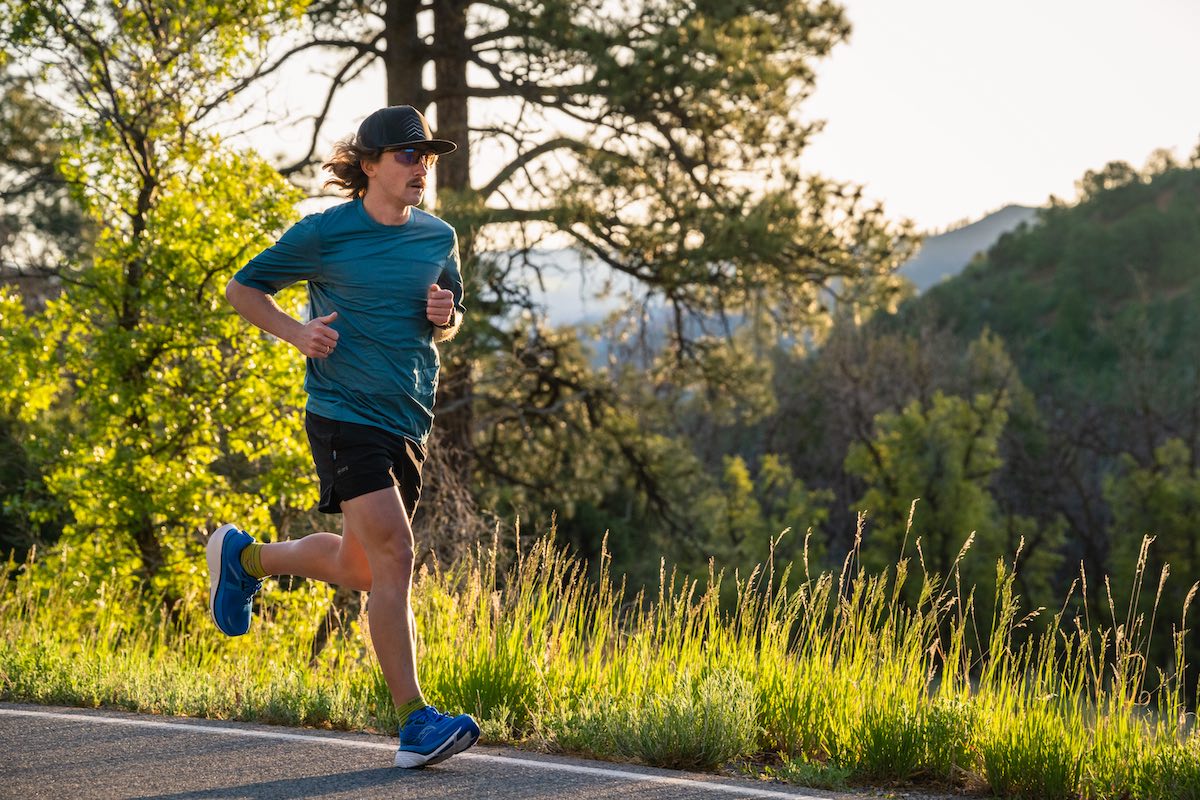
The Saucony Guide 18s are one of the best stability road running shoes currently available. Photo: iRunFar/Eszter Horanyi
Why You Should Trust Us
We compiled this best road running shoes guide with the expertise and testing experience of the iRunFar team, supplemented by extensive research by author Alli Miles and input from seasoned running shoe experts.
For the initial version of this guide, we began by compiling a list of about 45 road running shoes that are ideal for everyday running and suitable for a broad range of runners. These consisted of long-time favorites of the iRunFar team, new options on the market, and other popular and less popular shoes in the running world. After researching these options, we sent out 14 pairs of shoes to our team of nine testers, who extensively test dozens of shoes yearly.
Each tester received at least three shoe options for testing and put between 25 to 100+ miles on each shoe. The shoes that eventually made this guide received the most testing, and we shelved options that were not performing as well earlier on. At least two people tested every shoe to gather various opinions from different runners. We tested many of these shoes alongside stability and cushioned road shoes to have as many comparison options as possible.
Most of the testing for this guide happened during the spring and summer months as our testers were gearing up for their big summer goals. Testers ran on pavement, gravel, and light trails in cold, warm, hot, and wet conditions. The initial testing period spanned approximately three months, and testing continues as new shoes come to the market to keep this guide updated.
We rated the road running shoes on fit, feel, stability, cushion, responsiveness, performance, durability, and other factors. We looked closely at the upper, the midsole, and the outsole and how they stood up to miles of use. With this information, we further narrowed our list of the best to the shoes in this guide. Since its initial publishing, we continue testing road shoes to maintain the current best list with each update.
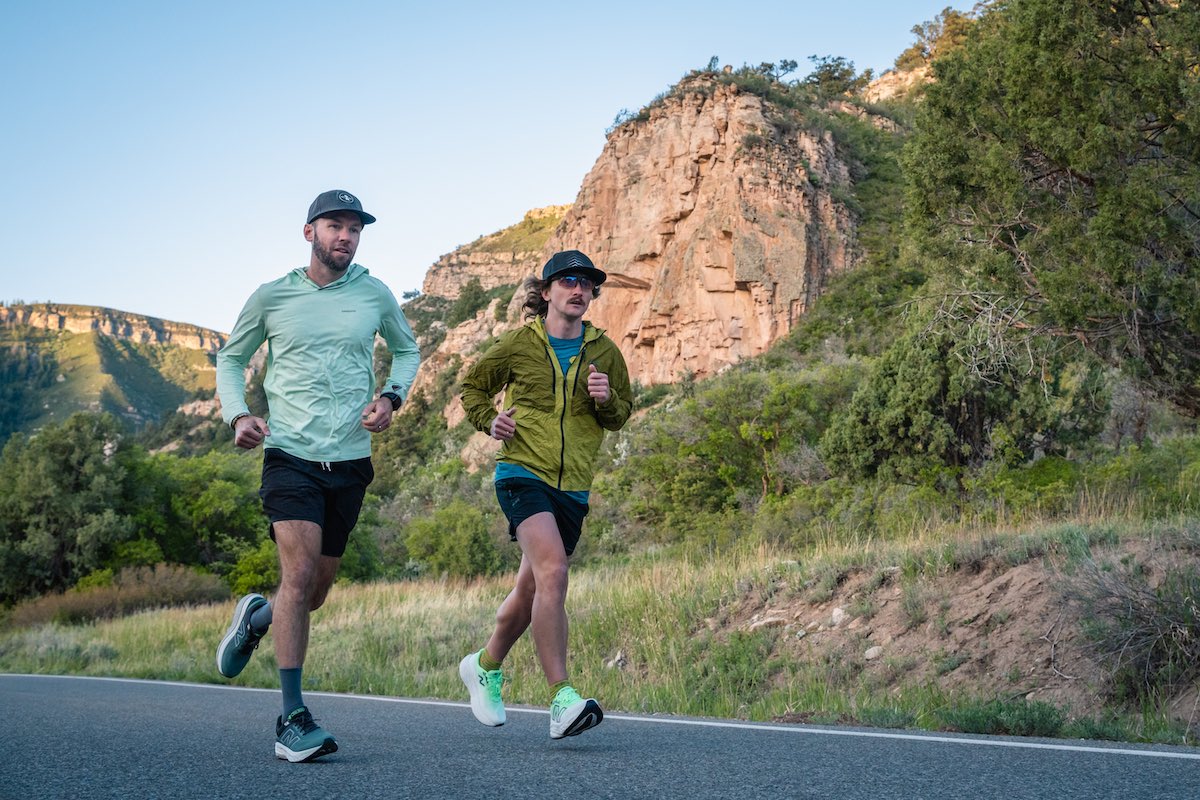
Testing New Balance road running shoes in Southwest Colorado. Photo: iRunFar/Eszter Horanyi
Frequently Asked Questions about Road Running Shoes
What is a road running shoe?
A road running shoe excels on pavement, asphalt, and other hard surfaces. They have smooth outsoles that generally lack the lugs and rock protection that trail running shoes provide. Road running shoes can come with a variety of cushion levels to accommodate different running needs. Some are lively and snappy for speed workouts, while others are comfortable enough to run endless miles. Others, like the Hoka Rocket X 3, are great for racing.
Our team placed the Hoka Clifton 10 at the top of our favorite road running shoes list because it did everything well and was a crowd-pleaser among testers. But other daily trainers like the Asics Novablast 5 and Brooks Ghost 17 are also excellent shoes.
What are the main differences between road running and trail shoes?
The most significant difference between road running and trail shoes is the outsoles. While the lugs and sticky rubber of trail shoe outsoles will provide purchase on a wide variety of surfaces, including hardpack, loose rocks, mud, and more, road shoes tend to have very smooth outsoles that excel on the pavement. This allows them to be lighter than trail shoes and more comfortable when running on flat and hard surfaces, namely pavement and hard-packed dirt roads.
The uppers of road shoes are also less durable than trail shoes since they have to withstand much less abuse from rocks and other trailside debris. Some shoes in this guide, including the Hoka Clifton 10 and Nike Pegasus 41, perform just fine on gravel roads and non-technical dirt trails.
Can I run on trails in road running shoes?
While it’s technically possible to run anywhere in road shoes, running on loose, steep, or technical trails in them is generally not recommended. With their relatively smooth outsoles, road shoes don’t provide much grip on anything other than pavement. For some road shoes, like the New Balance FuelCell Rebel v5, you might even want to leave them at home if the pavement is wet. If you choose to wear road shoes on trails, you might find yourself slipping and potentially falling and injuring yourself.
That said, on gravel or hard-packed trails that aren’t too steep, road shoes like the Nike Pegasus 41 may be perfectly adequate and a good choice, especially if you’re running a fair bit of pavement to get to and from the trails. The Hoka Clifton 10 is a good option for a road shoe with enough grip, durability, and support to perform on dirt surfaces.
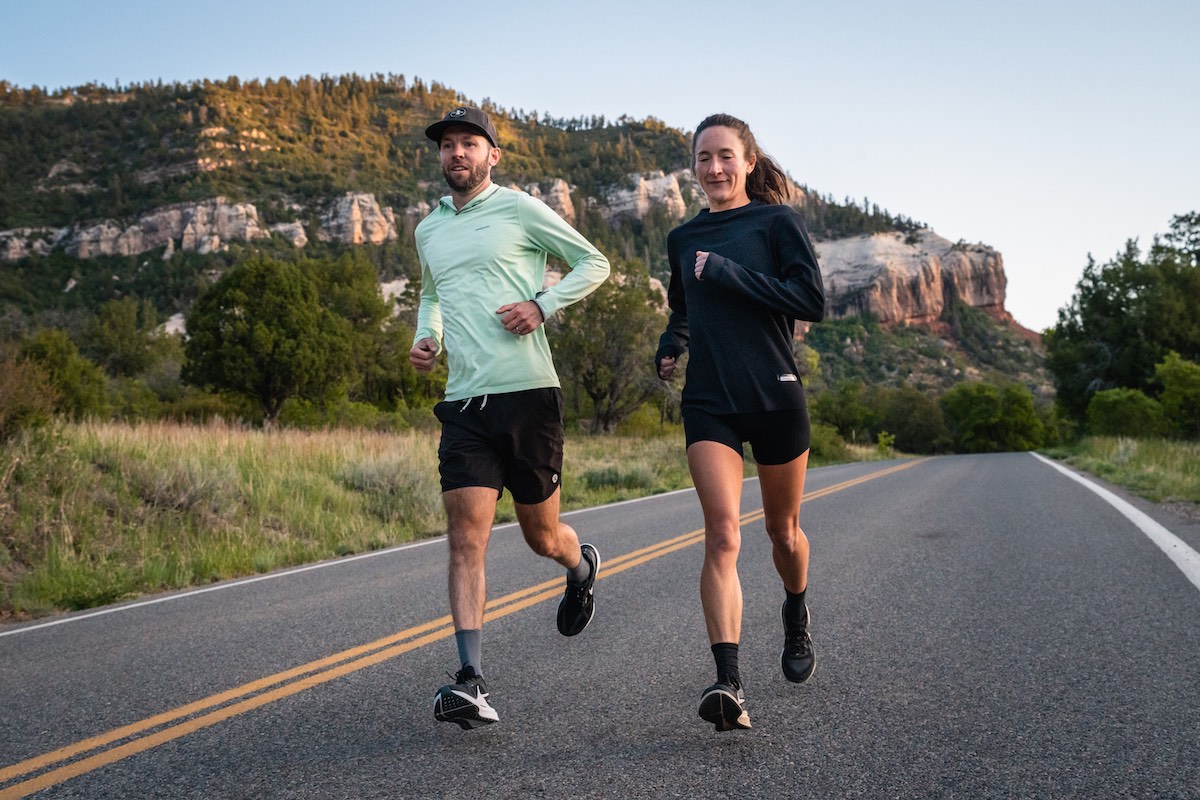
The iRunFar team testing Nike road running shoes outside of Durango, Colorado. Photo: iRunFar/Eszter Horanyi
What are the best road running shoes for beginners?
If you’re new to running and feeling confused about the best road running shoes for your needs, the best thing to do is visit your local specialty running shop. There, they’ll be able to measure your feet, discuss the different types of surfaces you want to run on, and analyze your gait. They can look at your arch height, determine the amount of pronation in your ankles, and provide recommendations for shoes that will help you have a long and healthy running career.
If you don’t have a local shop to visit, getting a fairly middle-of-the-road shoe in all measurements is a good idea. Most brands will run true to size, so you should be able to simply buy a running shoe that’s the same size as all the other shoes you wear. When it comes to heel-to-toe drop, choosing a shoe with a mid-range drop in the 6-millimeter range, like the New Balance FuelCell Rebel v5, will probably work well.
If you haven’t run much in the past, choosing a well-cushioned shoe like the Hoka Clifton 10 may help protect your joints, muscles, and ligaments from impact, and increasing your running mileage gradually will allow your body to adapt and help prevent injuries. If you’ve never run in a zero-drop shoe like the Altra Provision 8, you’ll want to transition into them slowly and keep your normal shoes in your regular rotation until your body adapts.
What are the best road running shoes for speed?
Regarding speed, a lighter weight and bouncier cushion is generally better, especially over longer distances. We loved the Hoka Rocket X 3 for racing, and the low weight of the New Balance FuelCell Rebel v5 also made them fast. If you’re looking for a road shoe for speedwork, something with a springy and lively feel is a good idea.
Highly cushioned shoes like the New Balance Fresh Foam X 1080v14 generally aren’t ideal for speedwork as they tend to be too squishy and slow-feeling, although this is changing with the increase of highly cushioned carbon-plated shoes coming onto the market. However, if you want something more specialized, keeping multiple pairs of shoes in rotation for easy and hard runs would be a good idea.
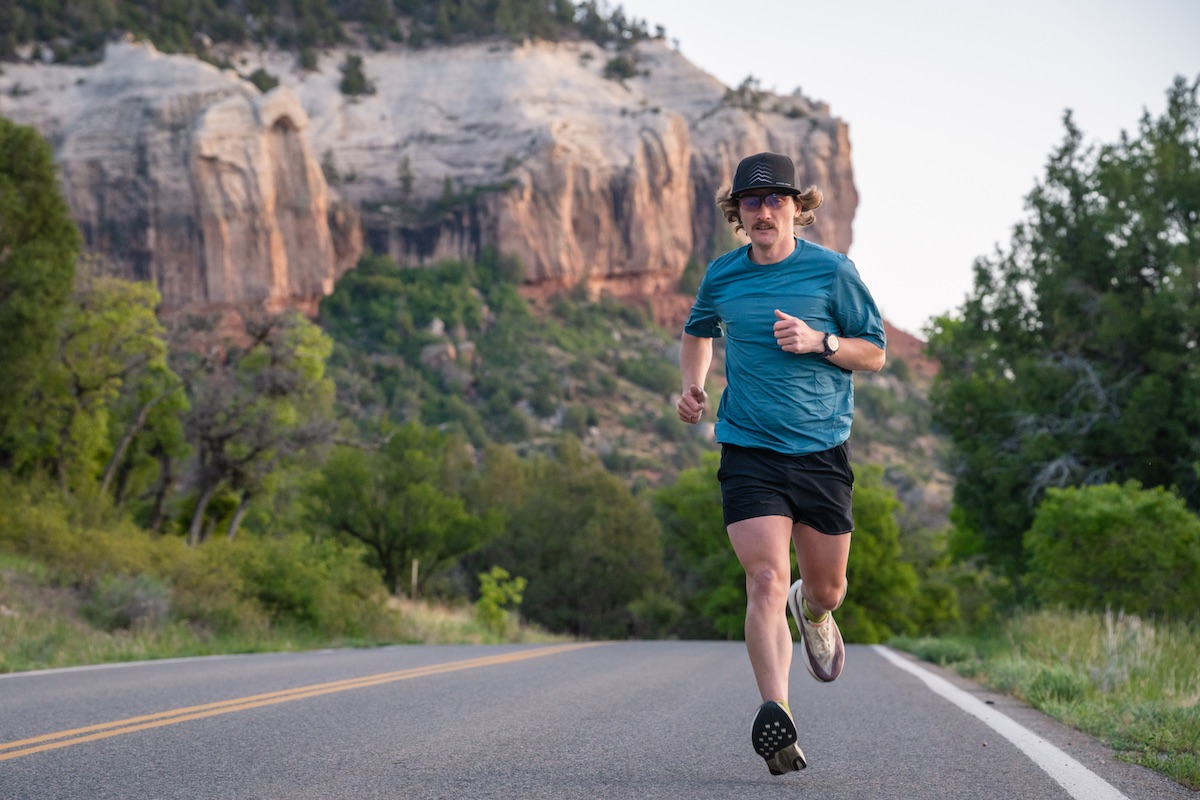
The New Balance FuelCell Rebel v5 is our favorite shoe for tempo runs and faster miles. Photo: iRunFar/Eszter Horanyi
What are the best road running shoes for marathons?
If you’re racing a marathon, we recommend the Hoka Rocket X 3, but for the miles you put in during training, you’ll want a more cushioned option. For longer runs, cushioned shoes like the Hoka Clifton 10 or the New Balance Fresh Foam X 1080v14 are great options to protect your feet, joints, and muscles from the impact of so many steps. Learn more about different cushioned shoes in our Best Cushioned Running Shoes guide.
While a highly cushioned shoe might be too much for someone trying to run a competitive marathon time, shoes without much cushion could lead to a faster breakdown of your muscles and increased joint pain throughout the run. But as with all shoes, wearing something comfortable that fits your feet well is far more important than having the latest and greatest shoes on the market. The New Balance FuelCell Rebel v5 is an excellent value for a marathon shoe and is in our Best Marathon Shoes guide.
What sort of heel-to-toe drop do I want in my running shoes?
Finding the right heel-to-toe drop is a matter of personal preference, running style, and injury history. Low- or zero-drop shoes, like the Altra Provision 8, are increasingly popular in both the trail- and the road-running world, but they don’t work for everyone.
Low-drop shoes can lead to a variety of injuries if you have tight Achilles tendons or calf muscles, especially if you don’t gradually ease your way into their use. On the other hand, low- and zero-drop shoes may be a great option if you frequently experience lower back tightness, as they tend to lead to the lengthening of all of the muscles in the back of your body.
Choosing a shoe with a moderate heel-to-toe drop, generally in the 6- to 8-millimeter range, like the New Balance FuelCell Rebel v5, should work for most runners. If you plan on transitioning to a shoe with a different amount of drop than you’re used to, it’s prudent to change over time so that your body can adjust without getting injured.
How do I want road running shoes to fit?
Road running shoes should fit like your other shoes: snug yet comfortable. The best way to get a well-fitting shoe is to go to a local running shop where they can measure the length of your feet and consider their shape and width when selling you a shoe.
When you put the shoe on, you should be able to place about a thumb’s width between the end of your toes and the end of the shoe. This will keep your toes from slamming into the front of your shoe as you run on different gradients, preventing bruising, blisters, and issues with your toenails. You should be able to wiggle and fully extend your toes without feeling constricted by the edges of the shoe or the upper. When you’re trying shoes on, be sure to try both feet since many people have feet that are two different sizes.
You’ll also want to ensure that the edges of your feet don’t hang over the shoe’s midsole, as this can cause blisters and lead to the uppers wearing out much more quickly. Many road running shoes, including the New Balance Fresh Foam X 1080v14, are available in standard, wide, and even extra-wide sizing options. Additionally, choosing shoes with a wider toebox, such as the Altra Provision 8, can help provide the front of your foot with extra space.
What are the best running shoes for walking?
Most running shoes work just as well for walking. However, some will be better than others. Generally, Hoka, Brooks, and New Balance make shoes that excel at both. Out of the shoes in this guide, we recommend the Hoka Clifton 10 as an excellent walking shoe.
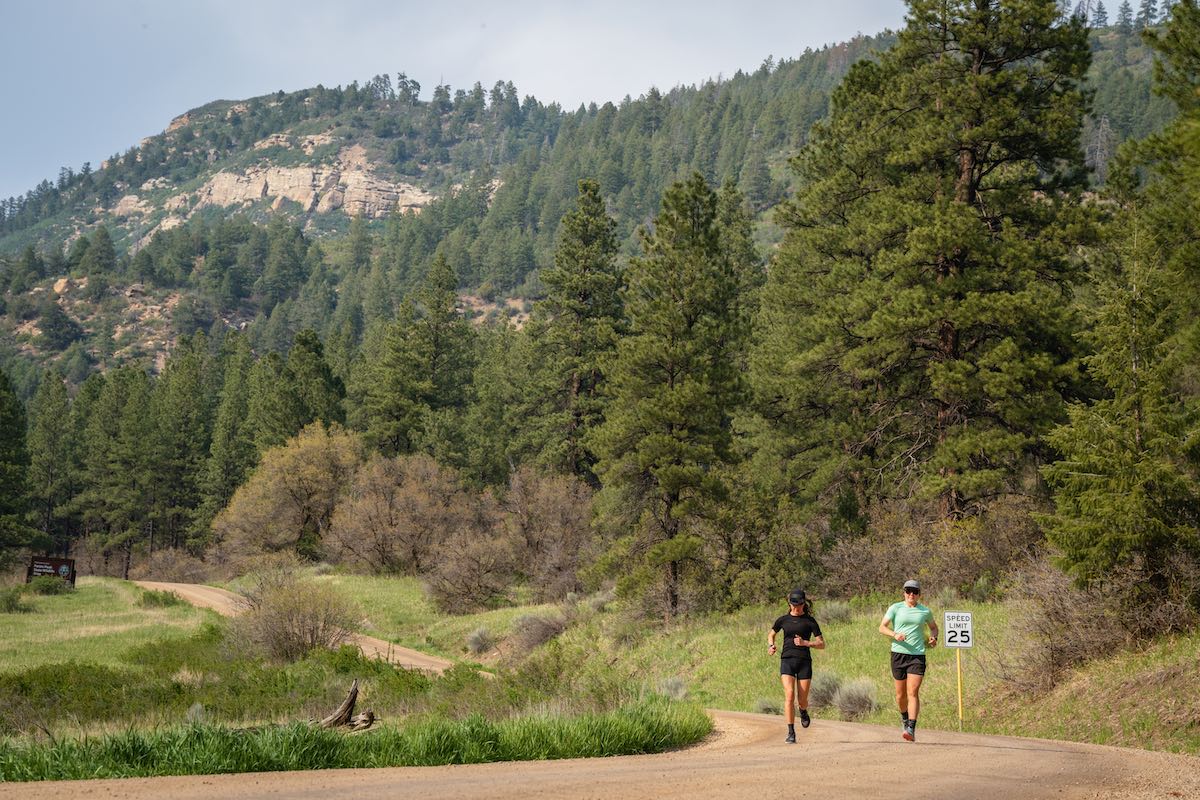
Testing on gravel roads in Southwest Colorado. Photo: iRunFar/Eszter Horanyi
Call for Comments
- Do you have a favorite road running shoe?
- What features do you consider when choosing a road running shoe?
